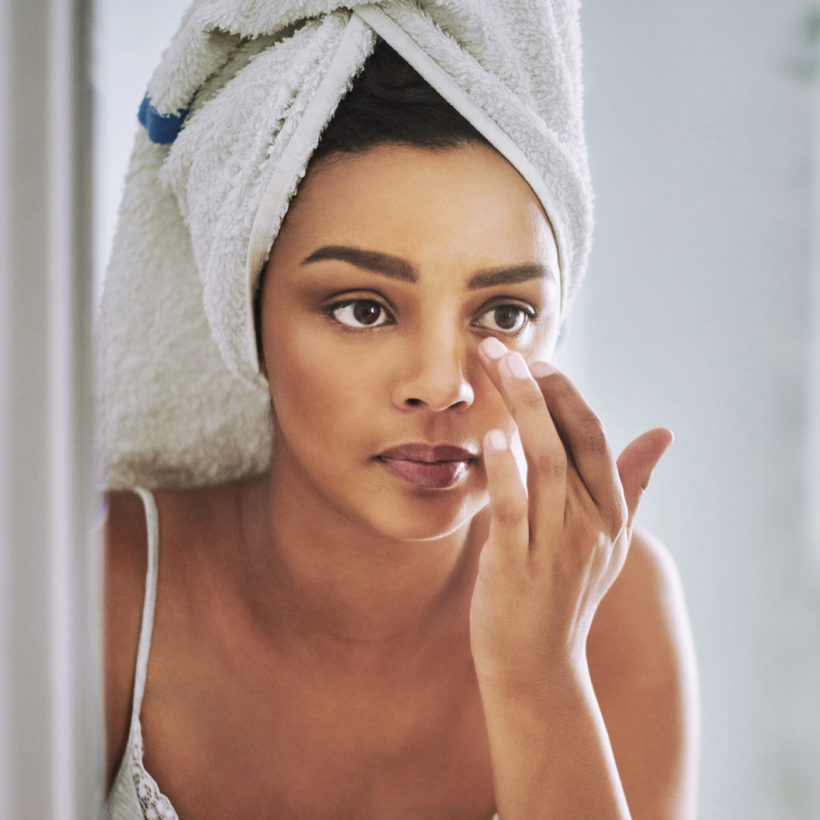Chances are you’ve heard of Botox. It’s the most popular cosmetic injectable in the United States and for good reason. “Botox is popular as a treatment for what are known as ‘dynamic wrinkles,’” says board-certified dermatologist and Surface Deep founder Alicia Zalka, MD. “Dynamic wrinkles are lines and furrows on the face that typically result from repetitive facial movements related to facial expression.” These dynamic wrinkles are a natural part of the healthy aging process and absolutely nothing to be ashamed of. But if you are looking to soften their appearance, Botox is an excellent option.
And as it would turn out, you can also use Botox to get ahead of wrinkle formation in the first place. Intrigued? Same. So ahead, Dr. Zalka explains everything you need to know about preventative botox, from how it works to the best age to start.
What Is Preventative Botox?
Just like it sounds, preventative Botox is an injection strategy that involves treating areas of the skin with Botox before wrinkles begin to form. “Preventative Botox is a term that refers to the way in which neurotoxins, like Botox, work to reduce the appearance of lines, wrinkles, and furrows that are currently visible, but can also help to reduce the future deepening or worsening of these lines,” says Dr. Zalka.
How Does It Work?
The more you contract the muscles on your face — which you do each time you raise your eyebrows, smile, sniffle, or do just about anything — the faster fine lines will begin to form. Botox works by preventing these facial contractions from occurring, so in theory, you can actually prevent wrinkles from forming in the first place by getting Botox treatments before lines begin to crop up around your forehead and eyes.
“By thwarting the contraction of the tiny muscles, which lead to lines on specifically targeted facial areas, regular use of [Botox] can inhibit the formation of wrinkles,” says Dr. Zalka. “Think of it this way: You work muscles in your body with weights and repetitive lifting to build them up and accentuate them. Botox does the opposite for facial muscles and temporarily relaxes them and impedes the contraction. Hence, facial muscles weaken, and the attached skin overlying these muscles is not able to furrow. Lines diminish and can even temporarily disappear.”
When Should You Start Considering Preventative Botox?
Everyone is unique and should not feel bound to a specific age to start receiving Botox treatments. There is no right or wrong time (even if you choose to never receive the treatment). However, Dr. Zalka advises the following rule of thumb: “The best time to consider Botox treatment is when facial expression lines, wrinkles, and furrows remain visible or ‘ingrained’ after making a facial expression,” says Dr. Zalka. “For example, you raise eyebrows and the horizontal lines show with this movement. When you relax the eyebrows, the lines you had when raising with expression leave a trace of their appearance and do not go back to smooth.” These lines that remain after you relax your face after an expression are referred to as “static wrinkles” (unlike “dynamic wrinkles” that only appear during an active expression). Once you start to see these static wrinkles, and if they truly bother you, it’s a good idea to see your dermatologist start talking about a preventative Botox regimen, which can be extremely effective at preventing the deepening of your lines and generally slow the facial aging process.
“Just remember, preventative Botox is only for lines and wrinkles that are the result of muscle movement, like frown lines between your eyebrows that come from furrowing the brows or lines around the eyes from squinting,” says Dr. Zalka. Preventative botox won’t work to prevent wrinkles from sun damage, which is partly why it’s so crucial to wear sunscreen (that, and to prevent skin cancer).
How Long Does a Treatment Last?
According to Dr. Zalka, a typical treatment will last between 3-5 months before you begin to start seeing your static wrinkles appear again. A number of factors can affect this timeline, including your genetics and how often you work out.
Safety Considerations

“While Botox is one of the most popular cosmetic treatments performed worldwide and has a very safe track record and high patient satisfaction, there are always side effects to consider,” says Dr. Zalka. She notes that the most common side effects, although they occur rarely, may include:
- Temporary bruising
- Fleeting pain
- Injection site redness or tenderness
- Uneven results (see a board certified-dermatologist to prevent this)
- Swelling
- Headache
- Extremely rarely, heaviness of the eyelids (also known as ptosis).
The Takeaway
Fine lines are a natural part of healthy aging and nothing to feel ashamed of. But at the same time, there’s also nothing wrong with wanting to slow the process down. Each individual has different personal preferences, and there’s nothing wrong with seeing a dermatologist for Botox to help you feel more confident. Botox is extremely effective at softening existing fine lines, but it works even better if you start early and use it as a preventative treatment. As a general rule of thumb, Dr. Zalka recommends seeking preventative Botox treatments once you start to see static wrinkles — wrinkles that remain ingrained in the skin after you relax a facial expression —forming on the forehead and around the eyes. And although Botox is one of the most popular cosmetic treatments with a proven track record for safety and patient satisfaction, Dr. Zalka notes that there can still be some side effects. To prevent these, be sure to visit a board-certified dermatologist or plastic surgeon for your injections and avoid sketchy med-spas.
We only recommend products we have independently researched, tested, and loved. If you purchase a product found through our links, Sunday Edit may earn an affiliate commission.









